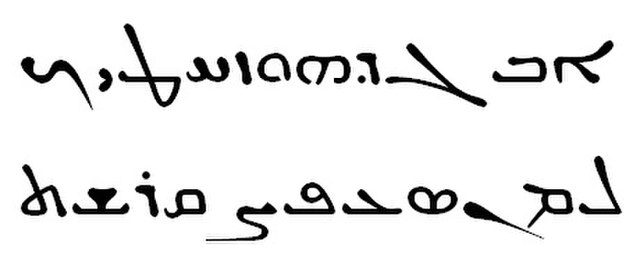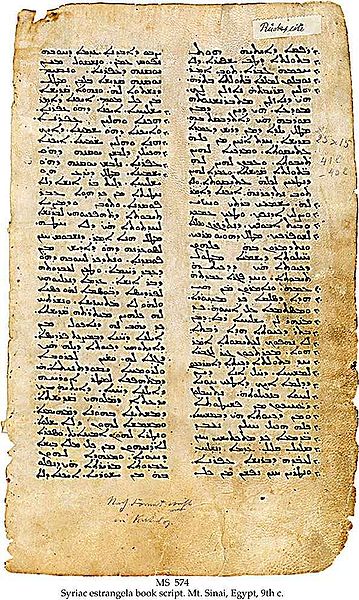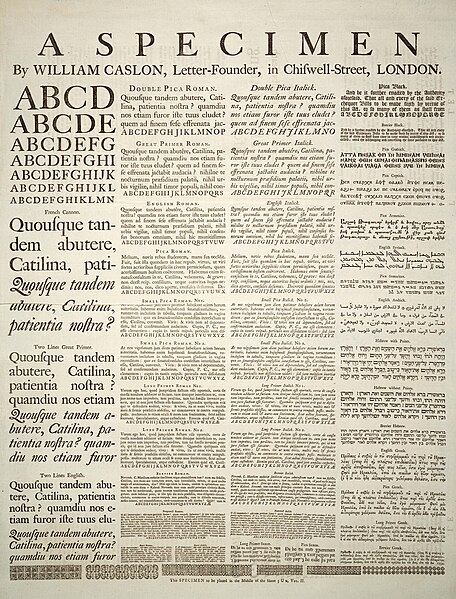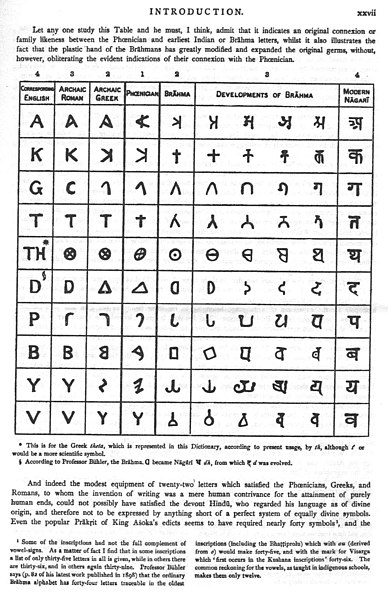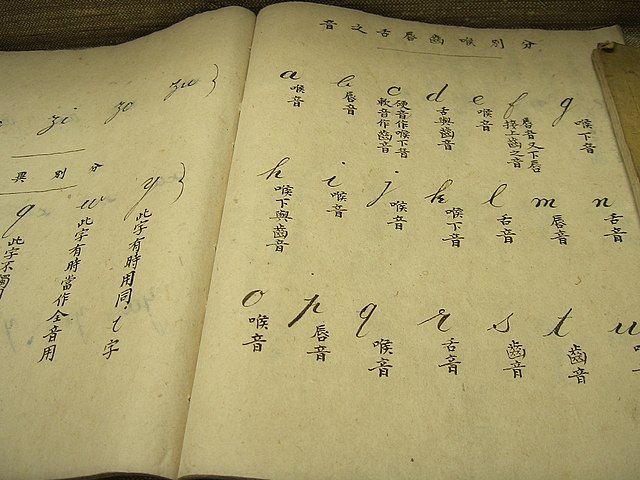The Syriac alphabet is a writing system primarily used to write the Syriac language since the 1st century AD. It is one of the Semitic abjads descending from the Aramaic alphabet through the Palmyrene alphabet, and shares similarities with the Phoenician, Hebrew, Arabic and Sogdian, the precursor and a direct ancestor of the traditional Mongolian scripts.
Estrangela-styled alphabet
A 9th century ʾEsṭrangēlā manuscript of John Chrysostom's Homily on the Gospel of John.
A 17th century Maḏnḥāyā liturgical manuscript from the Vatican Library. Note the title written in ʾEsṭrangēlā.
A 16th century Sertā manuscript of the New Testament, Epistle of James.
A writing system comprises a particular set of symbols, called a script, as well as the rules by which the script represents a particular language. Writing systems can generally be classified according to how symbols function according to these rules, with the most common types being alphabets, syllabaries, and logographies. Alphabets use symbols called letters that correspond to spoken phonemes. Abjads generally only have letters for consonants, while pure alphabets have letters for both consonants and vowels. Abugidas use characters that correspond to consonant–vowel pairs. Syllabaries use symbols called syllabograms to represent syllables or moras. Logographies use characters that represent semantic units, such as words or morphemes.
Written Chinese uses morphosyllabic characters assembled from phonetic and semantic components in order to encode the spoken language
A Specimen of typefaces and styles, by William Caslon, letter founder; from the 1728 Cyclopaedia
Table of scripts in the introduction to Sanskrit-English Dictionary by Monier Monier-Williams.
This textbook for Puyi shows the English alphabet. Although the English letters run from left to right, the Chinese explanations run from top to bottom then right to left, as traditionally written.

